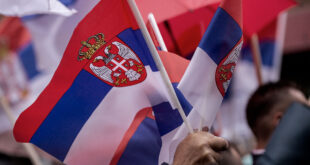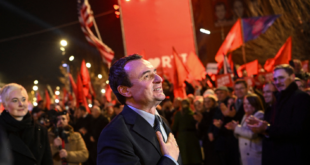NATO’s peacekeeping force in Kosovo, KFOR, has announced it is to start transferring protection of sacred Serbian sites to Kosovo Police. The Gracanica monastery, located in a Serb enclave on the outskirts of Pristina, will be the first shrine to come under the control of the mostly ethnic-Albanian police.
In a press release, KFOR said on Thursday the decision reflected its ‘growing confidence in the capability of the Kosovo Police to perform this important task’.
“More transfers will occur over a period of time, but the timelines for each of the following sites are yet to be determined,” it added.
Kosovo is home to a number of significant Serbian Orthodox churches and monasteries built during the medieval Kingdom of Serbia, including the Decani monastery and the Patriarchy of Pec.
The Gracanica monastery was built in 1321 and is listed as a UNESCO World Heritage Site.
Protection of churches and shrines was stepped up after the the March 2004 riots, which swept Kosovo leaving many religious buildings torched and vandalised.
The KFOR press release added: “This is another big step in a process of strengthening even more the Kosovo security institutions, because they will protect some of the most valuable cultural and religions heritage monuments in the whole of Kosovo.”
Oliver Ivanovic, the State Secretary of the Ministry for Kosovo and Metohija in the Serbian Government, said that he was not concerned with the transfer of Gracanica’s protection as the monastery was located in a Serb-majority area and would probably be protected by Serb officers.
Gracanica is the second site of religious or historical importance to Serbs to be entrusted to Kosovo Police.
In March, the protection of Gazimestan, a monument marking the location of the Battle of Kosovo, was handed over from KFOR.
The tower to the north of Pristina marks the spot where the medieval Serbian state fought the Ottoman Turks in the Battle of Kosovo of 1389.
The battle has huge historical significance for Serbia and Serbs and is the subject of many stories, songs and legends.
 Eurasia Press & News
Eurasia Press & News



